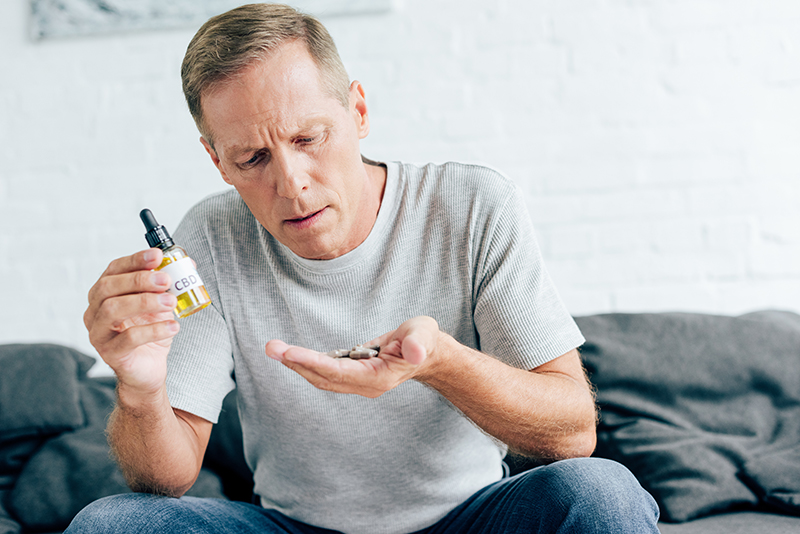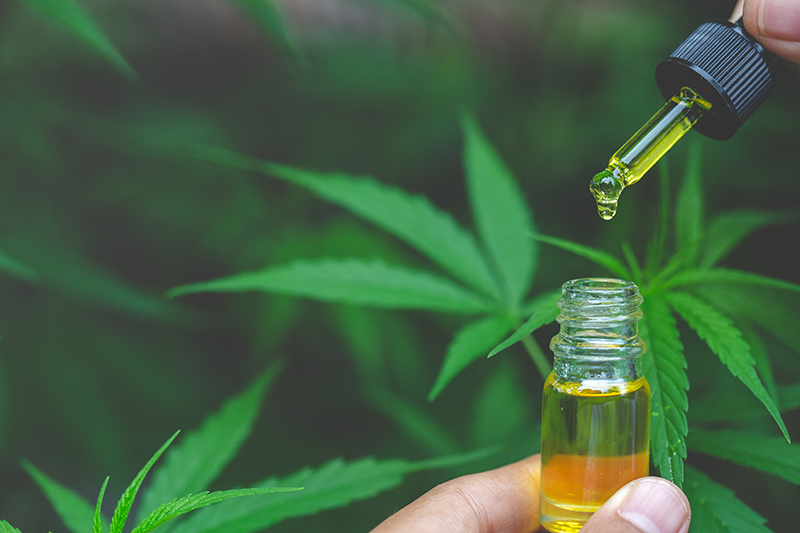Cannabidiol or CBD, one of the main chemical compounds in cannabis, has been known to help in the treatment of a variety of conditions including anxiety, inflammation, and chronic pain. If you struggle with chronic pain and/or are new to the cannabis space, taking a new drug can seem daunting. Luckily, cannabidiol is nonaddictive and fairly safe to use compared to other drugs like prescription painkillers. In this article, we will explain how CBD alleviates pain and inflammation, and how you can treat your conditions safely.
How does CBD work?
CBD works by indirectly activating your body’s endocannabinoid system (ECS). The ECS contains a network of neurons and receptors in parts of the brain like the hippocampus, hypothalamus, and reward regions like the nucleus accumbens. It helps to regulate memory, appetite, mood, and pain. While the neuroscience of pain and pain centers in the body is still not fully understood, we do know that by activating certain receptors, CBD seems to alleviate pain mainly by reducing inflammation.

How does CBD specifically treat chronic pain?
A 2007 study showed that repeated administration of CBD (once every day for seven days) reduced sciatic nerve pain and inflammation in rats in a dose-dependent manner. Researchers speculated that this occurred through stimulation of a class of receptors called TRPV1, or by activation of a cannabinoid, our body naturally produces called anandamide. It is clear CBD achieves its therapeutic potential through indirect activation of many different receptors and does not directly activate CB1 receptors as THC does.
In 2017, researchers in Kentucky found that high doses of CBD given transdermally to arthritic rats over seven days significantly decreased joint inflammation. This occurred because CBD seemed to reduce pro-inflammatory biomarkers, essentially molecules that create inflammation as part of an immune response. These rats also had decreased pain responses, most likely an effect of the decreased inflammation. Another study showed CBD administration reduced joint inflammation in osteoarthritic rats and even had neuroprotective properties. They found this was because of decreased leukocytes near the joint site (leukocytes are white blood cells involved in the immune response).
The researchers in the former study administered CBD by rubbing it on the skin because CBD typically has a low bioavailability. Once it passes through the digestive system, a lot of it has already been processed or is converted into inactive byproducts. Applying CBD directly to the spot of interest bypasses this issue and allows for more specific treatment. This is why some recommend treating issues like arthritis or muscle pain using a CBD salve, especially if you want to avoid any side effects you may experience when using a product that has a combination of THC and CBD.
Scientists have also looked at how CBD can alleviate other types of chronic pain, like neuropathic pain. In 2019, Canadian researchers found that repeated CBD administration decreased allodynia (when a pain response is triggered for events that may typically not be painful, like light sensitivity during migraines or pain in response to touch) and anxiety-like behavior in rats. We know CBD does not act directly on CB1 or CB2 receptors but can act on various other receptors like TRPV1 and receptors related to immune responses to create its array of therapeutic effects.
In the case of this 2019 study, CBD achieves its reduction in anxiety-like behavior through serotonin receptors. Serotonin receptors are most commonly known for their role in depression and depression medications, but serotonin also regulates sleep, appetite, anxiety, gastrointestinal motility, and a whole host of other functions (actually, about 90% of your serotonin receptors are located in your gut, not your brain!). This may mean that CBD can not only relieve pain but also some anxiety related to that pain.

Safety and side effects
The most common side effects cited with cannabidiol use are weight fluctuations, fatigue, and diarrhea, but overall, CBD is typically well-tolerated. It has been shown to help with addiction or relapse to other drugs like painkillers or nicotine. Opioid receptors are close in proximity to the ECS, and the ECS has been seen to modulate the activity of these receptors. This has exciting implications for tackling the opioid epidemic and the future of safely treating pain. This news also gives a person in pain more options to treat their pain in ways that involve less danger for the future.
Finding a treatment that works for you
If you want to avoid any possibility of feeling “high,” using a topical CBD or a CBD flower with no THC is the way to go. However, finding a strain of flower with absolutely no THC is nearly impossible—many CBD strains higher in CBD can have THC concentrations around 0.8%, like the popular strain ACDC which has 11-15% CBD and less than 1% THC. At this point, the amount of THC present is so negligible that you would likely not feel any effects.
There are subjective pros and cons to the method of consumption you choose, and each person has their preference. Smoking allows for more instant results as it enters your bloodstream more quickly, but topical administration allows for more localized treatment of the site in pain. In terms of dosing, we always suggest “start low and go slow” as tolerance builds up and you get a feel for how you prefer consuming CBD. No matter what route you choose, we hope there is a sigh of relief at the end of the tunnel.
Get daily cannabis industry news and insights. Subscribe
End
